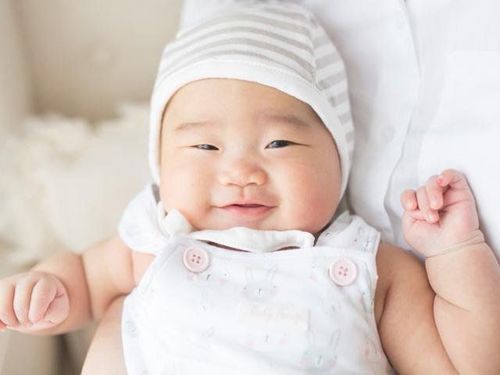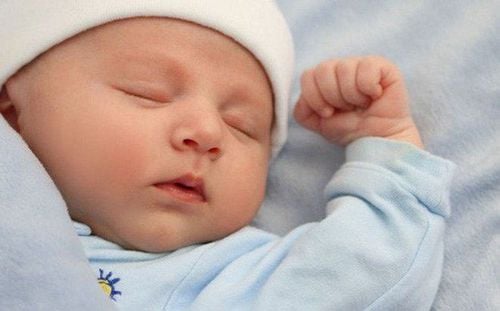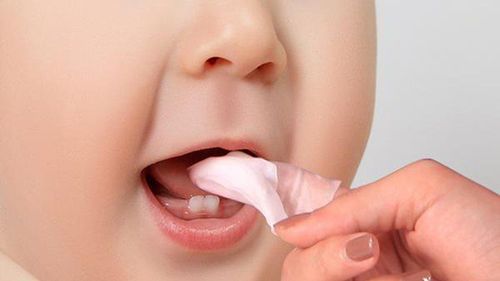The article was professionally consulted by Master, Doctor Doan Ngoc Quynh Tram - Department of Pediatrics - Neonatology - Vinmec Nha Trang International General Hospital
How can mothers best care for their infants to ensure they have the "energy" for physical activities? Have you found your own "formula" for taking care of your beloved baby yet? This article will provide milestones to help parents better understand their child's development.
1. Child Care
Up to now, your baby has not yet grasped the difference between the image of an object and the real object itself. Therefore, your baby may show equal interest in a photograph of you and your actual smiling face. At this point, the distinction becomes more apparent as your baby begins to produce clucking sounds. You may notice stronger reactions, such as smiles and coos, when your baby sees another real child compared to looking at a picture in a book. Your baby's self-awareness is also developing, and they may enjoy looking into a mirror, even though they might not yet realize they are seeing themselves. They simply enjoy admiring the beautiful reflection and will quickly smile at it.
Another delightful change: Around 14 weeks, your baby starts to view the world in color. They can now detect subtle colors that were previously hard to distinguish, although 14-week-old infants still tend to prefer bright primary colors like red and blue. The world seems full of wonder to them, so create a vibrant and imaginative environment for your little one.
This week, your 14-week-old baby may enjoy listening to music. As music becomes more engaging and captivating, your baby has various ways to show their interest: for example, being excited by an upbeat tune or calming down when you sing a gentle lullaby. For some babies, this is a surefire way to stop crying by using their favorite songs.

2. Changes in eye color for a 14-week-old baby
Is your baby’s blue eye color turning green or brown? You might start noticing changes around this time. Eyes that were once bright, but caramel-colored, may turn dark brown, and light blue eyes might shift to a deeper blue, green, or even brown. Most babies will have their permanent eye color by 6 months.
Regardless of the eye color, the doctor will ensure their health by checking for the red reflex. This involves using a red light reflection from the back of the retina when the eye doctor shines a light into your baby’s eyes. It's the same effect you see in photos when the camera flash makes eyes appear red. While you may dislike it in photos, in reality, it’s good news because it indicates your baby doesn’t have cataracts. Over time, the doctor will likely check this during each examination.
During the first 6 months, it's normal for your baby’s young eyes to appear slightly crossed at times.

3. Milestones for a 14-week-old baby
This week, you might start to notice that your baby can see you more clearly and their eyes can track you as you move around the room. This improvement is due to the increasing strength in your baby's head and neck, along with their gradual developing visual tracking abilities. You can test your baby's tracking skills by moving an object from side to side to see if they follow it with their eyes and head.
As your baby's strength grows, take a moment to sit down and observe this wonderful development. It's important to let your baby explore their body's functions in their own way during this developmental period.
At this point, your baby is also beginning to establish a more consistent daily routine. They can now go longer periods without feeding (their stomach is about the size of a plum). Sleep patterns and feeding schedules are becoming clearer.
Try to stick to these simple routines as much as possible. This consistency will help your baby anticipate their daily activities, reducing stress and frustration during the early years, especially during transition periods like the four-month sleep regression.
4. Some changes in mothers 14 weeks postpartum
Hair, skin, and nails all undergo changes. Taking care of yourself after childbirth can feel like a constant battle. You might notice that the hormones from pregnancy, combined with breastfeeding hormones, can affect your hair, skin, and even nails.

You can seek out appropriate products to help soothe your body and make a difference.
If your child shows any unusual health signs, parents can take them to the Vinmec Healthcare System for timely examination and treatment.
Reference source: parents.com; motherandbaby.co.uk
To arrange an appointment, please call HOTLINE or make your reservation directly HERE. You may also download the MyVinmec app to schedule appointments faster and manage your reservations more conveniently.









